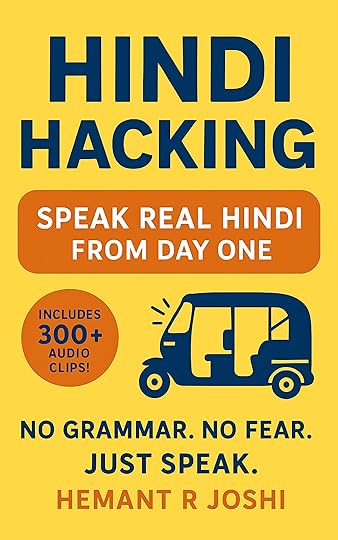Introducing Hindi Hacking: A Practical Language Guide
After publishing The Advisory Board in 2019, I had been looking for my next book idea for the longest time. As I turned all of my attention and creativity of writing fiction to screenplays, finding an idea worthy of a book was extremely hard.
About 6 months ago, I was having a conversation with a friend about how he wants to impress his girlfriend by talking Hindi. He even tried Duolingo, but was having a hard time starting to learn a new “script.”
That’s when it struck me – in the modern day, we don’t really need to learn Devanagari to communicate with others. To speak and even to write, we’ve started using Romanized Hindi.
Given my love for the language, I toiled with the idea of creating a tutorial for a few days. The problem – I didn’t want to “teach” a language like they usually do – start with grammar, sentence construction, vocabulary, and so on. My experience with learning German has been that it is far better to start having conversations rather than obsess over Grammar initially.
In fact, that is how we learn a language as kids. By listening and repeating, not by reading and obsessing over spellings and tenses.
When I did some online research, I found that there were several books that focused on “Hacking” a language – these were the fastest way to learn a language. But there was none for Hindi.
Along this time, I was also wanting to leverage AI seriously for getting stuff done. After several iterations, I was able to work with Claude to define and refine a book that was fun, practical and non-traditional.
“Hindi Hacking” was born.
It is a book for non-Hindi speakers to get introduced to the language in a way that they’ll use practically on their trip to India.

Defining the structure and writing took about 2 months, with support from Claude (I’ll create a separate post about how to use AI for your writing projects – it’s not as straightforward as you think).
But no one learns by reading. It had to include audio for pronunciations or the whole book would be pretty useless. But I was lazy. I thought about hiring a recording artist to do the recordings, but none of the options seemed frugal. The miser in me said no, and grabbed my own collar to start recording the audio snippets. After recording, I realized that getting them embedded in Kindle was another thing.
I then spoke to a publisher friend, who mentioned that it is increasingly becoming common to have a QR code in a book that links to a YouTube channel. This seemed doable, only if I was willing to create videos. Man, who knew writing a book would be so complicated?
But I bit the bullet and recorded videos.
Initial feedback on the concept and the book has been encouraging. The first few months are critical for a book, and I will now be focusing on maximising reviews for the book – fingers crossed!
The book goes live on August 22, 2025, in all Amazon markets. Hope you like it.
Hoping this opens doors for more experiments around Hindi.
I plan to be more regular with blogging going forward. Subscribe to stay in touch!
If you don’t like the content, make sure to sip a glass of water before unsubscribing.
The post Introducing Hindi Hacking: A Practical Language Guide appeared first on Hemant R Joshi.



